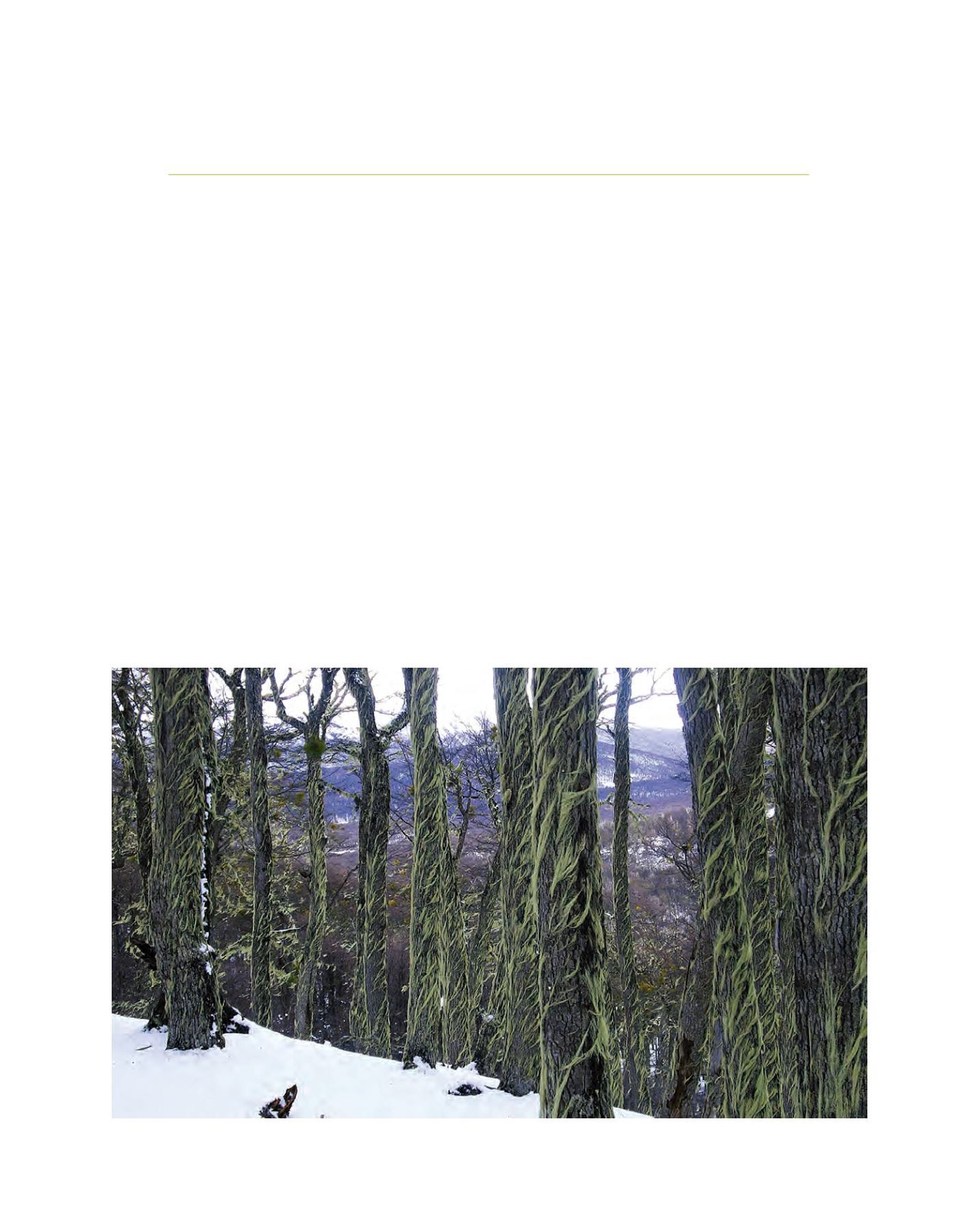

[
] 238
Chile: a country with forestry tradition
Gerardo Tornquist Fernández, Corporación Nacional Forestal, Chile
C
hilean forests, represented politically by the Ministry of
Agriculture through the National Forestry Corporation
(CONAF), cover almost 22 per cent of the national terri-
tory, while also constituting the economic, social and cultural
ambit for millions of people. By virtue of this, CONAF focuses
a significant proportion of its public activity on reinforcing and
expanding the synergy between human beings and the forest,
part of which is summarized by means of concrete examples
and actions contained in this report.” (Eduardo Vial Ruiz-Tagle,
Executive Director of the National Forestry Corporation, CONAF)
Chile and its indigenous peoples
Chile is as rich in the biodiversity of its flora and fauna as in that of
its people. The indigenous peoples live in a hugely diverse ecosys-
tem that makes up the national territory. For example, the Aymara,
Quechuan, Atacameño and Colla peoples live in the arid northern
zone, the Rapanui inhabit Easter Island, the Mapuches live in the
rainy southern zone and the Yamana and Kawaskar peoples in the
icy austral zone.
The world visions of each of these indigenous peoples
are closely linked to nature. The Pachamama of the
Aymaras, the Patta Hoyri of the Atacameños and the
Wallmapu of the Mapuches are all concepts of land
encompassing the territory with its people, animals,
vegetation, history and climate.
The relationship between the indigenous commu-
nities and nature helps to satisfy religious, spiritual,
medicinal, economic and cultural needs. However,
with the world’s development, indigenous culture has
been deteriorating. In view of this, the State resolutely
supports the restoration and conservation of nature,
as well as that of the ancestral indigenous knowledge
concerning nature, particularly with regard to the
native forest.
Chilean forestry policies
Since the 19th century, Chile’s public authorities have
maintained a concern for the well-being of the coun-
Secondary growth of lenga (
Nothofagus pumilio
) in the Trapananda National Reserve, Aysén Region
Image: Hugo Rivera, CONAF
“
















